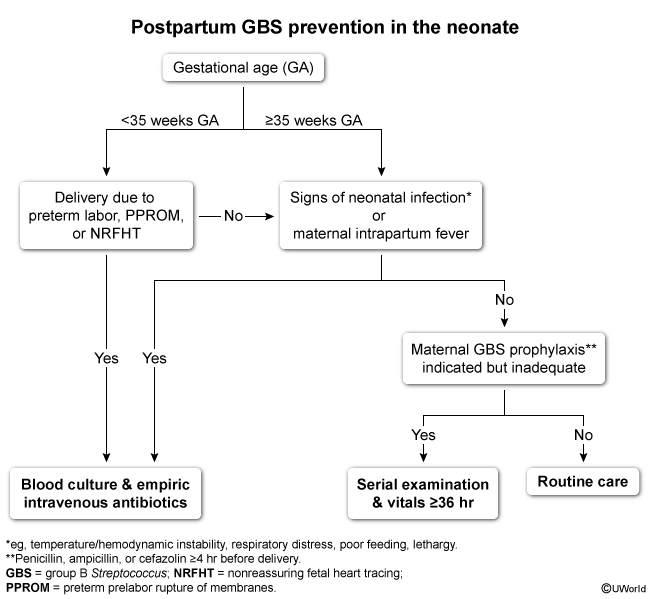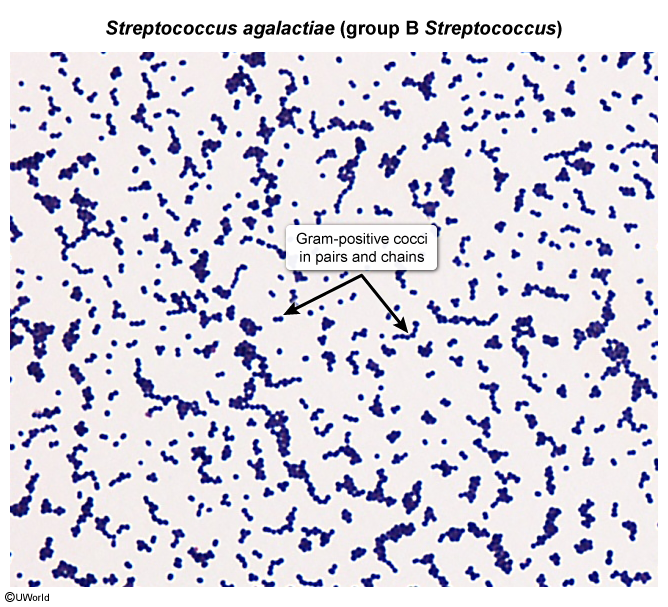Maternal And Neonatal Group B Streptococcus Infection
Article Sections
Introduction
Group B Streptococcus (GBS), also known as Streptococcus agalactiae, is a gram-positive bacterium that can colonize the gastrointestinal and genitourinary tracts of adults (Image 1). In general, colonization is asymptomatic; however, it can cause maternal (eg, urinary tract infection [UTI], intraamniotic infection, endometritis) and neonatal infections following delivery. Neonates are particularly susceptible to severe GBS disease. Therefore, identifying and treating patients with GBS colonization is a critical component of prenatal and intrapartum care.
Maternal group BStreptococcusinfection
GBS colonizes approximately 10%-30% of pregnant women, and colonization status can change throughout pregnancy. GBS colonization is typically asymptomatic; however, it can become pathologic and result in maternal disease. This is usually due to an increase in bacterial burden with the invasion of different tissues (eg, upper genital tract, urinary tract) through virulence factors (eg, polysaccharide capsule) that assist in epithelial cell adhesion and invasion. The most common manifestations of GBS disease during pregnancy are UTIs, intraamniotic infection, and postpartum endometritis.
Continue Learning with UWorld
Get the full Maternal And Neonatal Group B Streptococcus Infection article plus rich visuals, real-world cases, and in-depth insights from medical experts, all available through the UWorld Medical Library.
Figures

Images
